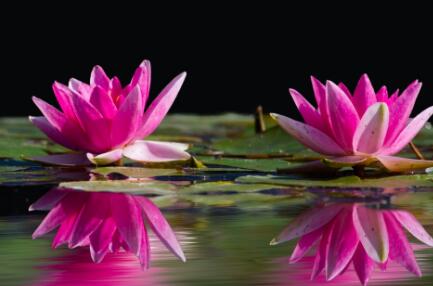Read the article to understand the planting time and method of tulips. It's as simple as that to grow tulips well.
Tulip, also known as lotus, musk, Dutch, etc., is a kind of herb belonging to the genus Tulip of Liliaceae. It is planted all over the world. The flowers are vigorous and straight, the leaves are elegant and beautiful, and the lotus-like flowers are dignified and lovely. They are called the queen of flowers in the world and become a symbol of fashion and internationalization. This article mainly introduces the planting time and methods of tulips in detail. I hope I can help you.

1. Planting time of tulips
Generally speaking, the best time to plant tulips is in autumn (late autumn), that is, from the end of October to December, if you plant too early, it will affect rooting because of the hot weather, and if it is too late, it will blossom because of the temperature.
Some flower friends are planted in January next year, you can also see the flowering normally, it is not too late, if it is 5 ℃ balls at the latest can not exceed the Beginning of Spring species, otherwise there is no point in planting. If it is a natural ball, it will not be suitable after February, because the temperature is already getting warmer.
Second, the planting method of tulips
1. Seed ball treatment
Before planting tulips in late October, the bulbs should be treated at low temperature, and the bulbs should be refrigerated at a low temperature of 4: 9 ℃ in the refrigerator to prevent the bulbs from mildew and rot due to high temperature. After refrigerating, soak the seed ball in carbendazim solution for half an hour to disinfect and sterilize it.
2. Sandy soil
The soil for planting tulips should choose sandy soil that is fertile and loose and has good drainage, and it is best that the soil can be slightly acidic. You can choose to mix peat soil with perlite or rotten leaf soil and vermiculite in the same amount, and then add mature compost to make the soil full of fertility and meet the growth needs of tulips.
3. Planting bulbs
Put the treated tulip bulb on the prepared soil, the top of the bulb facing up, pay attention to the need to peel off the grayish-brown epidermis outside, so that the bulb can germinate faster. The planting depth of the bulb is generally 3 times 2, the size of the bulb, and then covered with thin soil to reveal the top.
4. Late maintenance
After planting tulip bulbs, it is necessary to do a good job of maintenance in the later stage, keep the temperature between 5 and 10 ℃, and put it in a cool and ventilated place for about 3 days. Then water the tulip bulb, keep the soil moist, and apply a small amount of granular compound fertilizer, which will successfully take root and grow new buds in about 20 days.
5. Points for attention
(1) low temperature environment
Tulip seeds prefer low temperatures and germinate faster at low temperatures. Generally, the seeds of tulips will germinate at about 5 ℃, and the germination rate can reach 90% at about 7-9 ℃. However, it should be noted that when the temperature exceeds 16 ℃, the seed will germinate slowly, and 25 ℃ will make the seed no longer germinate.
(2) suitable light
Tulips are flowers and plants with long sunshine. They like light very much and need enough light to grow. After the seeds germinate, the seedlings should be placed in a bright area that can accept astigmatism so that they can slowly receive sunlight, so as to carry out photosynthesis to promote their better growth.
Time: 2019-03-14 Click:
- Prev

How much is the price of water lily seeds per jin? How do you plant it? Is the planting method complicated?
Water lilies are often born in ponds and lakes, and are often cultivated in the pools of some parks. Water lilies like sunshine and are well ventilated, so tropical and hardy water lilies that bloom during the day close at night and bloom again in the morning. Water lilies are mainly propagated by ramets, and it is okay to sow seeds, but they are not as efficient as ramets.
- Next

Large inventory of planting methods of potted fig trees attached: causes and control methods of non-fruiting of potted fig trees
In addition to being planted in the field, figs are extremely suitable for potted plants or as dwarf shrubs in courtyards and gardens because of their short internodes and beautiful tree shape. Balcony is also a good choice, not only long branches and luxuriant leaves, but also bear a lot of sweet and big fruit. The flowers of figs can not be seen inside and outside the fruit.
Related
- Fuxing push coffee new agricultural production and marketing class: lack of small-scale processing plants
- Jujube rice field leisure farm deep ploughing Yilan for five years to create a space for organic food and play
- Nongyu Farm-A trial of organic papaya for brave women with advanced technology
- Four points for attention in the prevention and control of diseases and insect pests of edible fungi
- How to add nutrient solution to Edible Fungi
- Is there any good way to control edible fungus mites?
- Open Inoculation Technology of Edible Fungi
- Is there any clever way to use fertilizer for edible fungus in winter?
- What agents are used to kill the pathogens of edible fungi in the mushroom shed?
- Rapid drying of Edible Fungi

